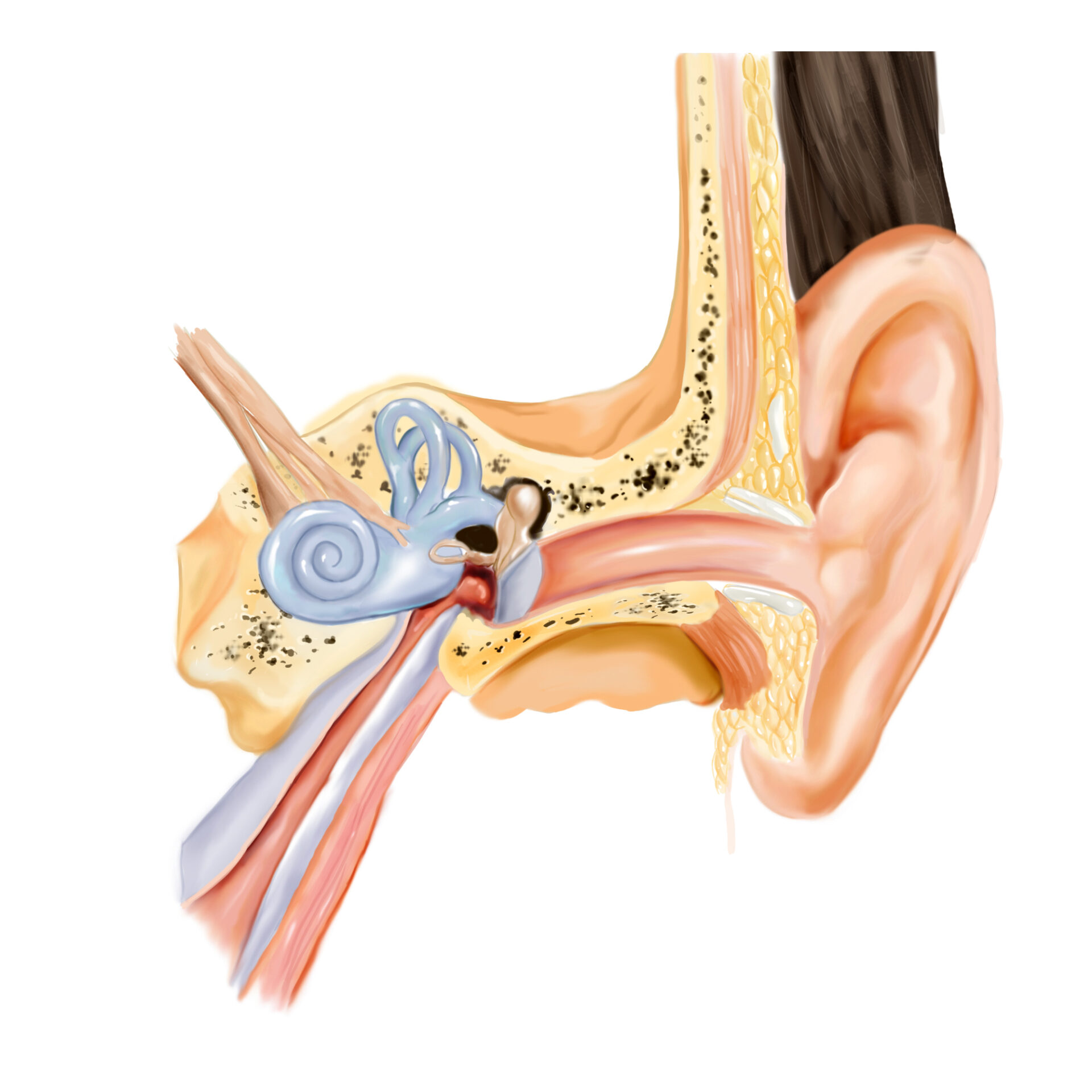Introduction
Middle ear infections, also known as otitis media, encompass a range of inflammatory conditions affecting the middle ear space. These infections can cause discomfort, hearing impairment, and, if left untreated, potential complications. As healthcare professionals, understanding the different types of middle ear infections is crucial for accurate diagnosis and effective management.
In this article, we outline the various types of middle ear infections, their clinical features, and appropriate interventions.
Types of Middle Ear Infections
Acute Otitis Media (AOM):
Description: A common infection, especially in children.
Cause: Often follows respiratory illnesses, leading to eustachian tube dysfunction and fluid accumulation. Symptoms: Ear pain, tugging at the ear, fussiness, fever, and drainage.
Treatment: Antibiotics for bacterial infections. First line is Amoxicillin (5–7 day course).
Alternatives for penicillin allergy: Clarithromycin or erythromycin (preferred in pregnant women)
Otitis Media with Effusion (OME):
Description: Non-infectious fluid buildup in the middle ear.
Cause: Follows AOM or occurs due to allergies or pressure changes.
Symptoms: Muffled hearing, feeling of fullness.
Treatment: Usually resolves without antibiotics.
Chronic Otitis Media:
Description: Persistent inflammation or infection lasting over 6 weeks.
Causes: Untreated acute infections, recurrent infections, or eustachian tube dysfunction.
Symptoms: Hearing loss, ear discomfort, and drainage.
Treatment: Requires medical evaluation and depends on the severity and underlying cause. Antibiotics may be used if there is an active infection. Consider amoxicillin, clarithromycin, or erythromycin for penicillin-allergic patients.
Infectious Myringitis:
Description: Infection of the eardrum.
Cause: Bacterial or viral.
Symptoms: Severe ear pain, redness, blistering of the eardrum, and fever.
Treatment: Antibiotics for bacterial infections. Options often include amoxicillin, clarithromycin, or erythromycin.
Acute Mastoiditis:
Description: Infection of the mastoid bone behind the ear.
Cause: Often a complication of untreated AOM.
Symptoms: Severe ear pain, swelling, redness behind the ear, and fever.
Treatment: Urgent medical attention and antibiotics. Intravenous antibiotics are often used. Options include ceftriaxone, cefotaxime, or amoxicillin-clavulanate.
Remember that antibiotic use should be guided by clinical assessment, severity, and individual patient factors. Always consider local guidelines and antimicrobial stewardship principles when prescribing antibiotics for ear infections
Conclusion
Middle ear infections pose diagnostic challenges and require tailored management. Early recognition, appropriate treatment, and monitoring are essential. As healthcare professionals, staying informed about the latest research and guidelines ensures optimal patient care. Check out the Practitioner Development UK article on Navigating Otitis Externa: Bacterial or Fungal
References
NICE Guideline NG91: Otitis media (acute): antimicrobial prescribing
Rosenfeld R. M., Bluestone C. D., & Casselbrant M. L. (2018). Evidence-Based Otitis Media. PMPH-USA.
Smith J. E. (2018). Otitis Media: Diagnosis and Treatment. Springer.


